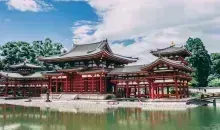Japan Ice Hockey
- Published on : 27/12/2012
- by : Japan Experience
- Youtube
Japan Ice Hockey. Read an article on the history of Japanese ice hockey and details on contemporary Japanese ice hockey teams and leagues.
Japan Ice Hockey
Andrea Marcus

Ice hockey isn't the first thing that pops to mind when you think of Japan, but the sport has a surprisingly long tradition here dating back to the 1920's.
Teams have been competing in the All-Japan Championships since 1930, making the tournament one of the oldest sporting competitions in the country.
Pro hockey arrived in 1966 with the start of the Japan Ice Hockey League. Originally a five-team league, the JIHL expanded to six teams in 1974 and stayed that way until tough economic times led to budget cutbacks and eventually the demise of the league early in the new millennium.
Organizers decided the sport could only prosper in Asia if teams in Japan, China and South Korea formed a multinational league, and in 2004 the plug was pulled on the 38-year-old JIHL to make way for the Asia Ice Hockey League.
Four Japanese teams compete in the A-League: The Nippon Paper Cranes (based in Kushiro, Hokkaido), Oji Paper (Tomakomai, Hokkaido), the Seibu Prince Rabbits (Tokyo) and the Nikko-Kobe IceBucks.

The A-League also includes two teams from China and two from South Korea, and there are plans to expand into other countries in the future.
Seibu is easily the most decorated team in Japan, but they've had the distinct advantage of playing for the better part of three decades with two teams. The franchise began as Seibu Railway in 1966, split into Seibu and Kokudo in 1972, then reunited in 2003. The teams share 23 JIHL and 16 All-Japan titles between them.
The franchise continues to prosper. Seibu/Kokudo was crowned A-League champion in 2005 and 2006 and reached the finals in 2007, where they were defeated in four games by Nippon Paper.
On the international scene, Japan is still very much a second-tier team compared to heavyweights such as Canada, Sweden and the Czech Republic.
Japan first waded into the international arena in 1936 at the Winter Olympics in Germany, and has appeared in seven Olympics since then, placing no higher than eighth.
Japan's inaugural trip to the IIHF World Championships came in 1957, where they were given a rude 16-0 welcome by the Soviet Union and an even ruder 25-1 sending off by Czechoslovakia. The team limped to an 0-6-1 record, a 3-3 tie with Austria being its only bright spot.

Japan is currently pooled in Division One, a rung below the Elite Division, and was ranked 21st in the world as of May 2006. The only Asian team ranked higher was 11th-place Kazakhstan, a team Japan beat 3-2 to win gold at the Sixth Asian Winter Games in Changchun, China in 2007.
Japanese hockey received another shot in the arm in 2007 when goalkeeper Yutaka Fukufuji became the first Japan-born player to appear in an NHL game. Fukufuji came on as a backup for the Los Angeles Kings in a 6-5 loss to the St. Louis Blues on Jan. 13.
Fukufuji went on to play in three more games for the Kings before being sent back to the minors.
The Kushiro, Hokkaido native was the second Japan-born player to be drafted in the NHL, following former Kokudo teammate Hiroyuki Miura, a defenseman picked by the Montreal Canadiens in 1992.
NHL players have also plied their trade in Japan over the years. Former Edmonton Oiler Randy Gregg, Chicago Blackhawk Darryl Sutter, Philadelphia Flyer Shjon Podein and Buffalo Sabres Derek Plante and John Tucker all had spells here. In addition, NHL coach Dave King was hired to guide the Japanese national team at the Nagano Olympics in 1998.
The bulk of Japan's rinks and teams can be found in the northernmost prefectures of Hokkaido and Aomori, where the cold winter months and proximity to hockey-mad Russia make ice hockey a logical choice.

But the sport is by no means confined to the north. In 2000, many Japanese were surprised to learn that there was a hockey rink as far south as Okinawa when then-Canadian Prime Minister Jean Chretien dropped by for a game on the sidelines of the G-8 summit.
Ice hockey could benefit from the recent successes of the nation's figure skaters, who include World Champion Miki Ando, teen sensation Mao Asada and Olympic gold medalist Shizuka Arakawa.
The interest in that sport has led to new arenas being erected across the country, meaning, theoretically, more places for hockey players to strut their stuff as well.
While ice hockey will never rival baseball or soccer for the title of Japan's most-watched sport, a few big wins at the international level would go a long way to drumming up interest in the sport.
If figure skating, ski jumping and curling can capture the nation's imagination, there's no reason why ice hockey can't do the same, especially with over 80 years of tradition to build on.
Text + images by Andrea Marcus









